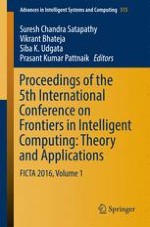2017 | OriginalPaper | Buchkapitel
A Framework for Dynamic Malware Analysis Based on Behavior Artifacts
verfasst von : T. G. Gregory Paul, T. Gireesh Kumar
Erschienen in: Proceedings of the 5th International Conference on Frontiers in Intelligent Computing: Theory and Applications
Verlag: Springer Singapore
Aktivieren Sie unsere intelligente Suche, um passende Fachinhalte oder Patente zu finden.
Wählen Sie Textabschnitte aus um mit Künstlicher Intelligenz passenden Patente zu finden. powered by
Markieren Sie Textabschnitte, um KI-gestützt weitere passende Inhalte zu finden. powered by
